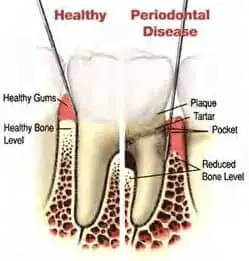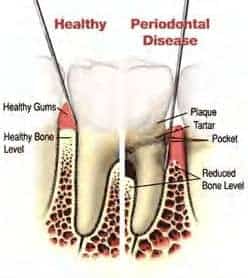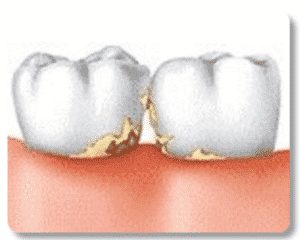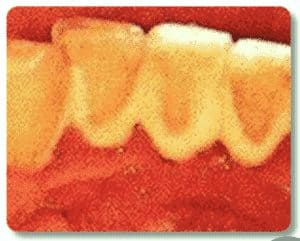I recently found out that I have gum disease. I guess it’s pretty advanced from what my dentist said. She’s sending me to a periodontist who she says has all the latest equipment and practices with a gentle touch. I’m worried, not so much by the diagnosis or the immediate treatment, but by what she said about periodontal disease not being curable. She kind of explained what she meant, but I’m wondering if you can clear this up for me. I’ll be able to keep my teeth, won’t I?
Richard S. in Tennessee
Hello Richard,
It is true that periodontal disease is never really cured, but it is possible to control it and prevent further damage to the teeth and their supporting structures with regular periodontal cleanings and maintenance.

Depending on how advanced your gum disease is, it may take one or several cleanings to completely remove all the bacteria, plaque, and tartar to give you a fresh start. And here is the good news. If you don’t lose any teeth with this initial treatment, you can keep them. But you’ll have to adjust to a new kind of normal. Instead of going to see the dentist every six months, you’ll need to follow a very strict protocol at home and have regular cleanings by a highly trained hygienist four times a year.
If you would like to find out more about what your initial treatment may involve, click here to read Pumphrey Periodontics’ Non-Surgical Gum Treatment page.
Good luck to you in restoring your full dental health.
This Blog is brought to you by Dr. David Pumphrey of Pumphrey Periodontics in Atlanta.


 Sometimes periodontal disease will respond to non-invasive treatments, but when it is very far advanced, it may require gum surgery. As you can see in the illustration to the left, when plaque and tartar build up under the gums, they break down the tooth’s supporting structures, affecting both the soft tissues and the bone. This in itself can cause recessed gums, exposed tooth roots, and characteristic black triangles between the teeth. Gum surgery may be required, first of all, to completely remove plaque, bacteria, and damaged tissues. And even though this leaves healthy teeth and gums, sometimes the results are not very aesthetic. In these cases, cosmetic gum surgery can cover exposed roots, fill in gaps, and bring a more uniform and natural look to your smile.
Sometimes periodontal disease will respond to non-invasive treatments, but when it is very far advanced, it may require gum surgery. As you can see in the illustration to the left, when plaque and tartar build up under the gums, they break down the tooth’s supporting structures, affecting both the soft tissues and the bone. This in itself can cause recessed gums, exposed tooth roots, and characteristic black triangles between the teeth. Gum surgery may be required, first of all, to completely remove plaque, bacteria, and damaged tissues. And even though this leaves healthy teeth and gums, sometimes the results are not very aesthetic. In these cases, cosmetic gum surgery can cover exposed roots, fill in gaps, and bring a more uniform and natural look to your smile.






